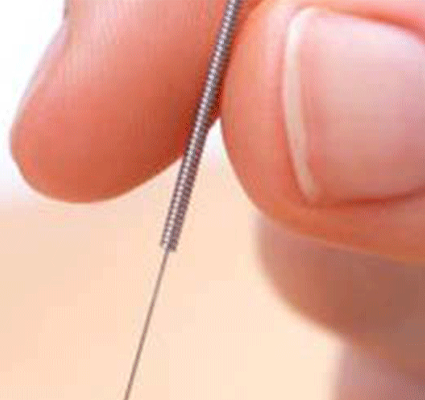Dry Needling

What Is Dry Needling?
Dry needling in Flagstaff, AZ, is also called trigger point dry needling, and intramuscular stimulation. This is a technique physical therapists, chiropractors, and other healthcare providers use to treat musculoskeletal pain and movement issues. Dry needling isn’t usually used as a primary treatment but rather as part of a more comprehensive treatment plan.
How Does Dry Needling Work?
Your physical therapist in Flagstaff, AZ will insert a thin needle into your skin to get to your trigger point. Doing so will help ease tendonitis, inflammation, muscle tightness, and promote healing. Dry needling is called dry because the needles are solid and don’t contain any medication within them. With dry needling, nothing is injected into your body unless you are receiving a trigger point injection.
What Is a Trigger Point?
Trigger points are knotted, tender areas in your muscles. They are extremely sensitive and painful when you touch them. A trigger point might be near the location of your pain or from referred pain, which is pain that is affecting another part of your body.
When a trigger point causes pain, a physical therapist will use dry needling by inserting an extremely thin needle into your muscle and tissue to reduce your referred pain, increase blood flow, and decrease tightness.
What Is a Trigger Point Injection?
Trigger point injections are used primarily to treat myofascial pain, which is muscle and facial pain. This type of injection is usually only used when other trigger point treatments have failed. In this case, trigger point injections are used along with other physical therapy treatments.
Does Dry Needling Hurt?
When people think of needles, they automatically think of pain. However, the trigger points are already sore and hurt when you touch them. So when your physical therapist is trying to find your trigger point, you will most likely feel a bit of pain. And you are also likely to feel some discomfort during the needling process, but it won’t be from the needle (other than the initial prick), because the pain is coming from your trigger point.
With that being said, most people will also feel some pain when the needle is in the trigger point. This is because of the twitch that is created by the dry needling. Additionally, you might also feel some soreness where the needle was inserted. However, that is only temporary. It’s important that you keep the area moving and continue stretching.
Conditions That Dry Needling Treats
Dry needling in Flagstaff, AZ is designed to help you increase your range of motion and is used to treat a wide range of musculoskeletal conditions. Here are the conditions dry needling is most commonly used to treat.
- A variety of tendonitis issues
- Migraines and tension headaches
- Whiplash
- Joint issues
- Hip pain
- TMJ
- Spinal issues
- Disk issues
- Repetitive motion issues like carpal tunnel syndrome
- Pelvic pain
- Night cramps
- Phantom limb pain
- Mouth and jaw problems like TMJ
- Postherpetic neuralgia (a shingles complication)
Does Dry Needling Work?
Yes, dry needling does work. This is because dry needling will help release or inactivate your trigger points. When this happens, it releases pain while improving your range of motion. Dry needling also provides biochemical, structural, and electrical changes in the properties of your muscle which enables your muscle to function properly. It also reduces recovery time for your injury.
Dry needling is also capable of providing immediate pain relief and your muscles will generally perform better and the results will last longer than they do compared to other soft tissue dysfunction techniques.

